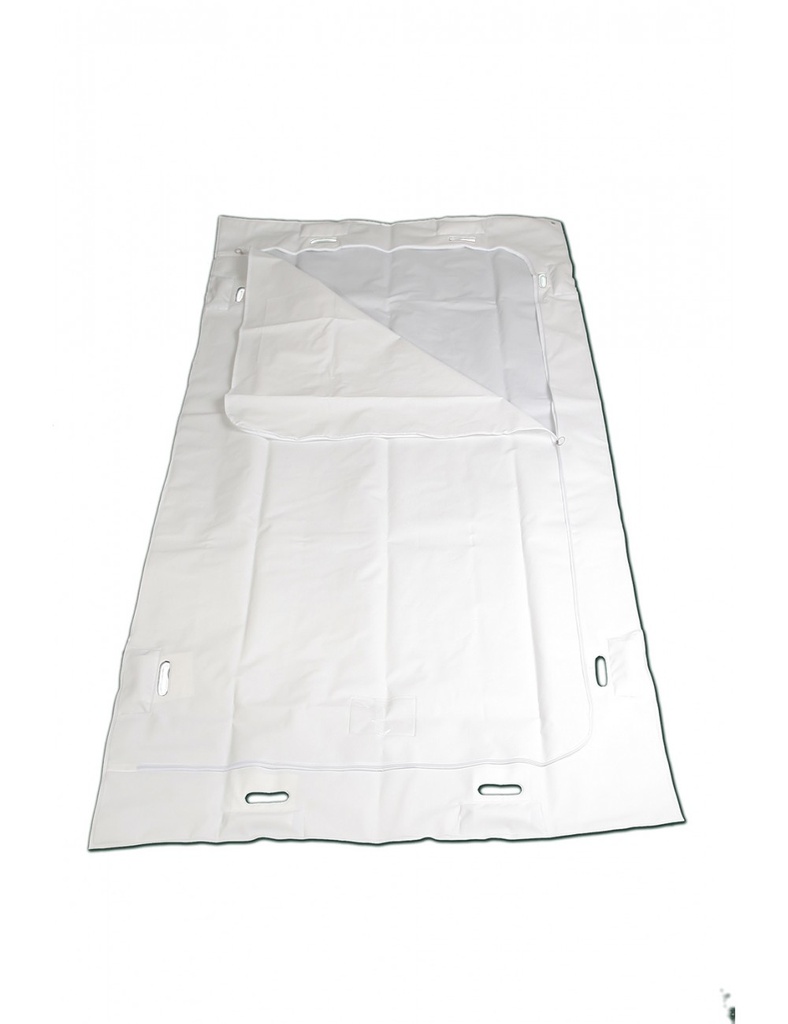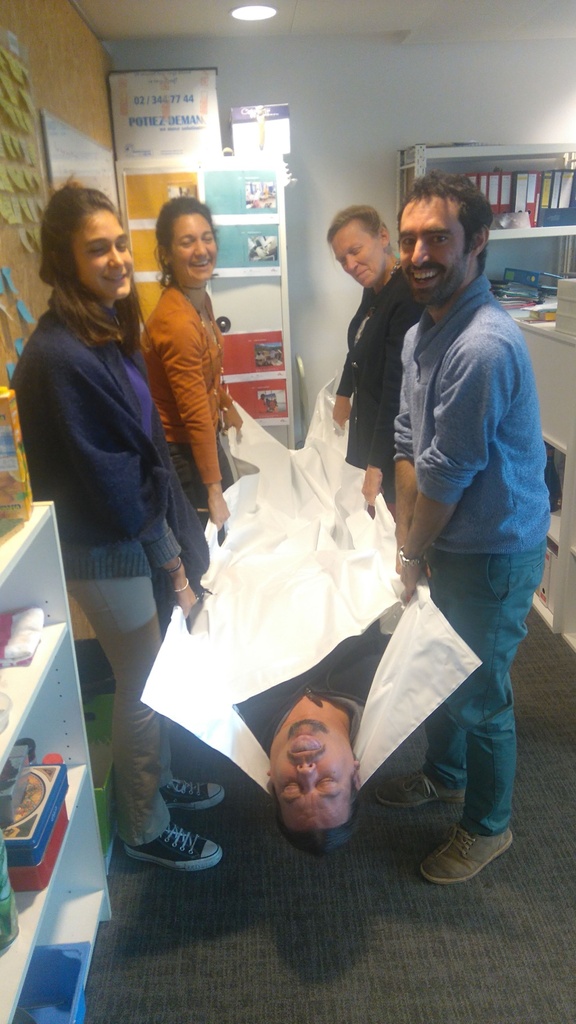BAG, BODY, plastic, white, 250-200µm, adult, 250x120cm
STD
SMSUBAGB5A-
Valid Article
Account code:
60210
HS Code:
392390
Last Updated on:
11/12/2024, 19:09:45
Single use
A single-use device, also referred to as a disposable device, is intended for use on one patient during a single procedure. It is not intended to be reprocessed (i.e., cleaned and disinfected or sterilized).
The product is part of at least one Kit.
A kit is a collection of products (medical and/or logistic) that are needed for a certain intervention in emergency. The choice and quantity of the articles reflects the MSF protocols for this specific situation. The use of Kits allows to start an intervention without a detailed evaluation.
BODY BAG for contagious diseases
Definition
Bag used for packing and transporting contagious human corpses before burying or other funeral rite.
Specifications
Quality standards
- ISO 6383-1, 2015, edition 2, (confirmed 2020) Plastics - Film and sheeting - Determination of tear resistance - Part 1: Trouser tear method
- EN 863, 1995, (confirmed 2002) Protective clothing - Mechanical properties - Test method: puncture resistance
Technical specifications
- Linear enforced PE (no PVC!), white and opaque (non biodegradable)
- Thickness:
- 250 µm under layer
- 200 µm upper layer
- Length:
- SMSUBAGB5A- (adult size): 250 cm minimum
- SMSUBAGB5C- (child size): 150 cm minimum
- Width:
- SMSUBAGB5A-: ± 120 cm (95 cm effective)
- SMSUBAGB5C-: ± 100 cm (75 cm effective)
- Waterproof
- Tear resistance minimum 35N length and 32N width
- Puncture resistance: minimum 21N
- Non splintering handles: 6 for the adult model, 4 for the child model
- Inner weld separating the handles from the bag (welding at minimum 2 cm from the handles)
- U-shaped zipper with 25 cm return allowing to open completely the bag, 25 cm distance from external length and 15 cm from external width
- 2 zipper pulls with plastic string
- U-shaped nylon links on cloth support
- double stitching with biodegradable thread
- stay stitches and welded end pieces at 15 cm from the ends and inner weld
- No document pouch
- Non sterile
Instructions for use
- Intended for epidemics with contagious corpses (e.g. cholera) and for emergencies.
- In case of highly contagious disease (e.g. Ebola haemorrhagic fever), body bags must be lined by an absorbent pad (see related articles).
- Information concerning the corpses should be written on the body bags with permanent markers.
- The head of the deceased should be positioned on the side of the zipper's return in order to show the face without having to open the whole body-bag.
- Follow appropriate procedures for the corpse's laying out.
- When a body bag is used, it is unnecessary to cover the corpse with lime.
- Wherever possible, inform yourself and follow local customs concerning funeral rites.
Storage
- Storage inside carton, keep out of direct sun light
- Shelf life: 10 years
MSF requirements
Selection of a sufficient quality to allow the bag to be easily carried and to prevent any external contamination for at least one month.
Some restricted information has been hidden. Sign in
to see this information







![[SMSUBAGBP15] (body bag) PAD, ABSORBENT, adult](/web/image/product.template/571625/image_256/%5BSMSUBAGBP15%5D%20%28body%20bag%29%20PAD%2C%20ABSORBENT%2C%20adult?unique=e67af52)
![[KMEDMCHO021] (module 001) RENEWABLE SUPPLIES 2019](/web/image/product.template/569222/image_256/%5BKMEDMCHO021%5D%20%28module%20001%29%20RENEWABLE%20SUPPLIES%202019?unique=e5b10ab)
![[KMEDMEBO03-] (module VHF isolation) PROTECTIVE EQUIPMENT](/web/image/product.template/571782/image_256/%5BKMEDMEBO03-%5D%20%28module%20VHF%20isolation%29%20PROTECTIVE%20EQUIPMENT?unique=e4e4006)
![[KMEDMEBO13A] (module VHF) MODULE ENVIRONMENTAL HEALTH](/web/image/product.template/571761/image_256/%5BKMEDMEBO13A%5D%20%28module%20VHF%29%20MODULE%20ENVIRONMENTAL%20HEALTH?unique=f6a65ab)
![[KMEDMEBO17A] (module VHF) SAMPLING AND SMALL ISOLATION](/web/image/product.template/571758/image_256/%5BKMEDMEBO17A%5D%20%28module%20VHF%29%20SAMPLING%20AND%20SMALL%20ISOLATION?unique=f6a65ab)
![[KWATKBOD25-] KIT, DEAD BODY MANAGEMENT, 25 bodies](/web/image/product.template/551425/image_256/%5BKWATKBOD25-%5D%20KIT%2C%20DEAD%20BODY%20MANAGEMENT%2C%2025%20bodies?unique=c049ea7)
![[KMEDMEBO12A] (module VHF) MODULE SUPPORT 1 HOSPITAL + 10 PHC](/web/image/product.template/571737/image_256/%5BKMEDMEBO12A%5D%20%28module%20VHF%29%20MODULE%20SUPPORT%201%20HOSPITAL%20%2B%2010%20PHC?unique=4b98b51)